Grand Prairie, TX Pollen and Allergy Report for Summer 2023
Pollen Allergy Trends in Grand Prairie, TX
When is pollen lowest in Grand Prairie, TX?

February
Lowest month total PPM
Avg. PPM
When is pollen highest in Grand Prairie, TX?

March
Highest month total PPM
Avg. PPM
How does pollen in Grand Prairie, TX compare to Texas?
Grand Prairie has a higher average PPM than the state of Texas.
Grand Prairie yearly avg PPM:
Texas yearly avg PPM:
How does pollen in Grand Prairie, TX compare to the USA?
Grand Prairie has a higher average PPM than the USA.
Grand Prairie yearly avg PPM:
USA yearly avg PPM:
Is pollen worse this year in Grand Prairie, TX?
Spring 2023 was worse than spring 2022.
Spring 2023 PPM:
Spring 2022 PPM:
Average PPM in Grand Prairie, TX


Grand Prairie, TX Pollen and Allergy Breakdown by Month
Grass
When is grass pollen highest in Grand Prairie, TX?
February has the highest grass pollen in Grand Prairie, TX with an average PPM of
When is grass pollen lowest in Grand Prairie, TX?
December has the lowest grass pollen in Grand Prairie, TX with an average PPM of
Tree
When is tree pollen highest in Grand Prairie, TX?
March has the highest tree pollen in Grand Prairie, TX with an average PPM of
When is tree pollen lowest in Grand Prairie, TX?
July has the lowest tree pollen in Grand Prairie, TX with an average PPM of
Weed
When is weed pollen highest in Grand Prairie, TX?
December has the highest weed pollen in Grand Prairie, TX with an average PPM of
When is weed pollen lowest in Grand Prairie, TX?
February has the lowest weed pollen in Grand Prairie, TX with an average PPM of
Grand Prairie, TX Pollen Monthly Breakdown by Pollen Type
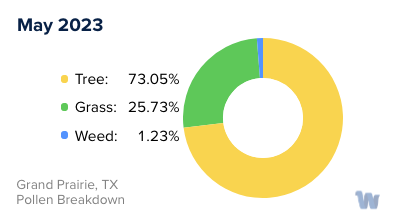
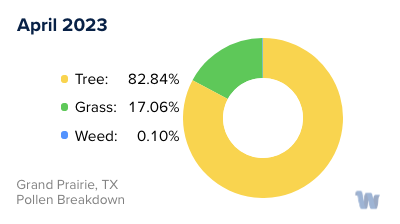
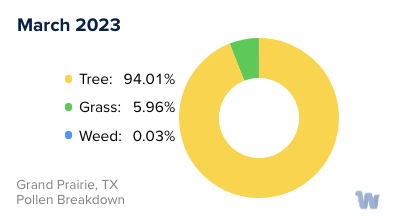
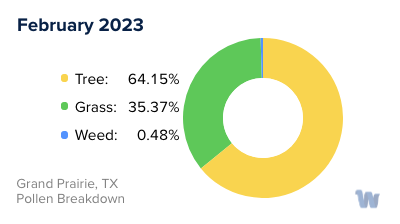
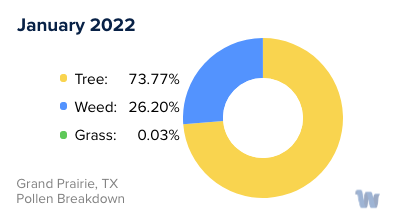
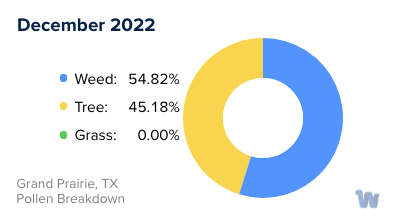
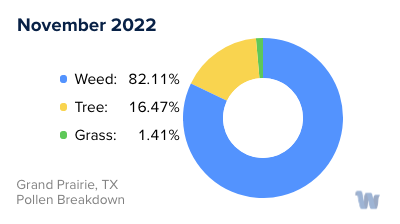

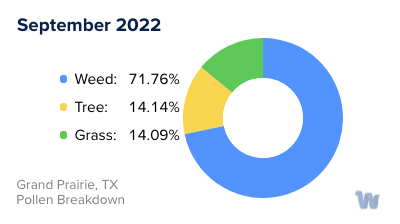
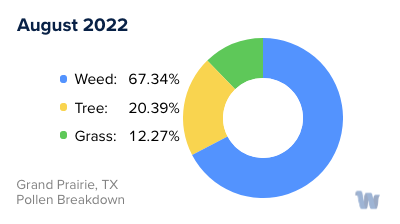

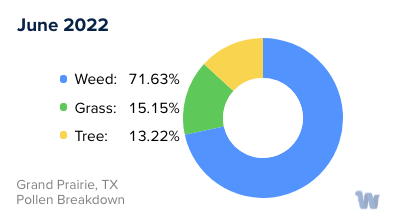
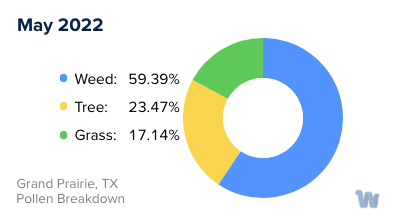
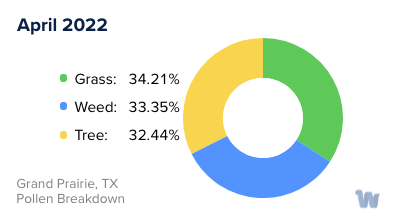
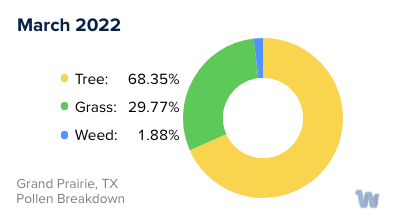
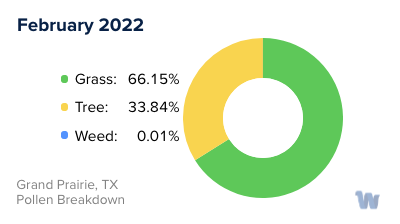
Pollen and Hay Fever in Grand Prairie, TX
Pollen allergies, commonly referred to as hay fever, are a pervasive health concern in Grand Prairie, Texas. This is due in part to the diverse array of pollen-producing plants in the region, each of which tends to release its pollen at different times of the year.
The primary offenders are tree, grass, and ragweed pollen. Tree pollen, which includes types from cedar, elm, ash, oak, and pecan trees, tends to be most prevalent in the cooler months and early spring. Particularly, mountain cedar pollen is present from November to February, followed by elm, ash, and mulberry pollen from January to May. By March, oak and pecan tree pollen enter the mix, coupled with the onset of grass pollen.
Grass pollen, including pollen from Bermuda, Johnson, and Kentucky bluegrass, tends to peak from March to May. This season can be particularly challenging for those sensitive to grass pollen, with symptoms including the typical runny nose and watery eyes, as well as a sore throat and asthma-like symptoms.
The summer months of June and July offer a brief respite, as the most common sources of allergies have stopped producing pollen, and pollen counts drop. However, this relief is short-lived, as ragweed pollen starts to rise in August and remains a concern until November. Ragweed is especially plentiful in the southwestern U.S.
and its pollen can cause a range of symptoms, including runny noses, sneezing, itchy eyes, and in severe cases, asthma flares.
As each pollen season tapers off, the next one ramps up, creating a cycle of potential allergy triggers throughout the year in Grand Prairie, Texas. This cyclical pattern underscores the importance of understanding the types of pollen present in the environment and their respective seasons, so individuals can better anticipate and manage their hay fever symptoms.

